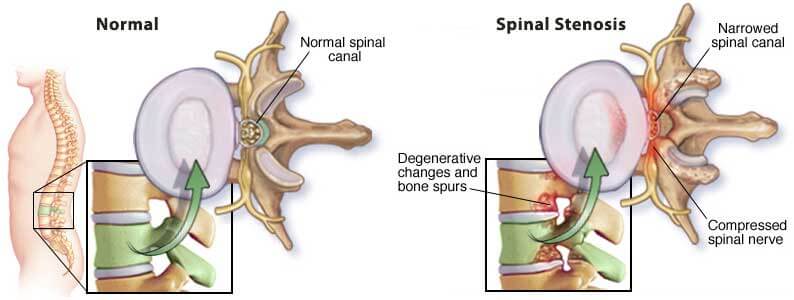Bootcamp for lumbar spinal stenosis
|
While practicing in my hometown of Sudbury, Ontario I noticed that there was a high number of patients presenting with symptoms of lumbar spinal stenosis. Within an aging population this condition in common. I decided that I would take further training in how to best treat this common condition. In a very well put together course by Dr. Carlo Ammendolia I learned a treatment protocol and exercise program designed specifically to aid patients with this condition.
|
Lumbar Spinal Stenosis, What is it?
Degenerative lumbar spinal stenosis (DLSS) is a type of arthritis that affects the lower spine. It is also referred to as spinal osteoarthritis which is a wear and tear type of arthritis that most of us get as we age. Some people will develop extensive arthritis, which will lead to thickening of the spinal joints, and thinning of the spinal discs causing narrowing of the spinal canals. The narrowed canals can lead to compression of the spinal nerves that travel through the canals to the lower back and legs. DLSS is one of the most common causes of disability and loss of independence in the elderly. With the aging population, the number of people who will develop this condition is expected to grow dramatically in the next 20 years.
Program Goal
The overall goal of the program is to improve the quality of life and maintain independence among the growing number of people who have DLSS. The program combines manual therapy, special exercises, instruction on body re-positioning techniques and self-management strategies. Manual therapy uses a special table that helps align the spine to maximize the openings for the spinal nerves. Special exercises help restore weak back and leg muscles and when combined with body alignment strategies, help to reduce the pressure on the compressed nerves when standing and walking. It is known that changing body alignment can reduce symptoms. DLSS is a chronic problem and learning how to live more effectively with it using self-management strategies allows you to become more in control and therefore better able to better cope with DLSS. Individuals should not attempt this program on their own without consulting with their health care professional to ensure it is appropriate for them.



